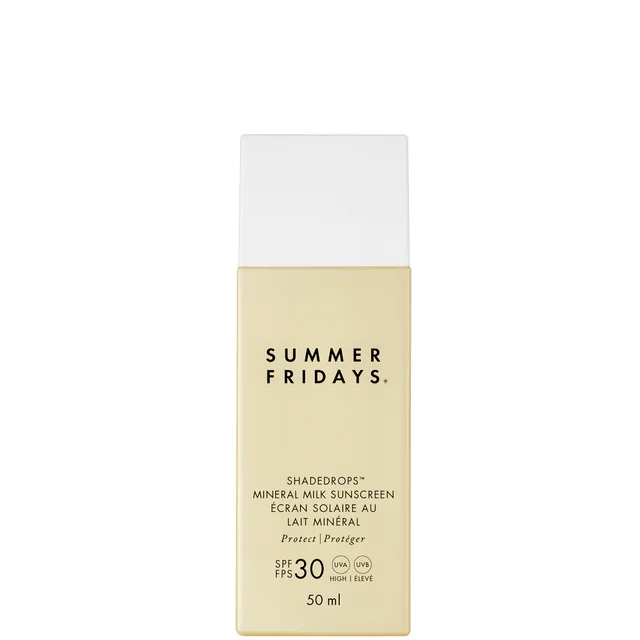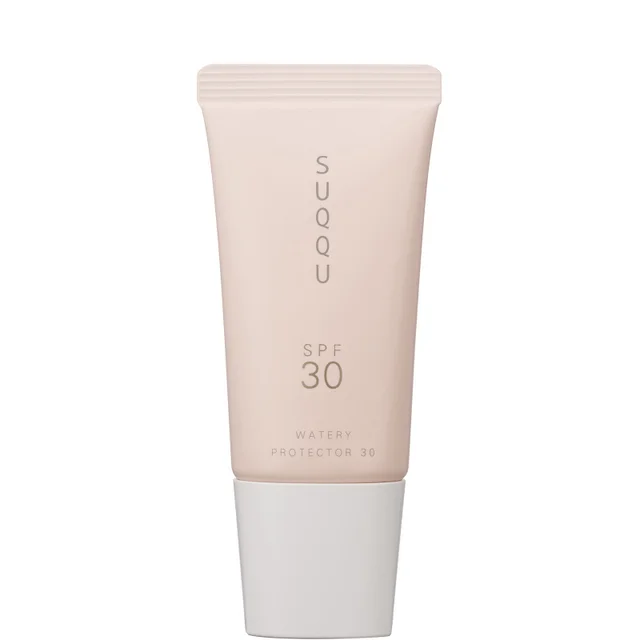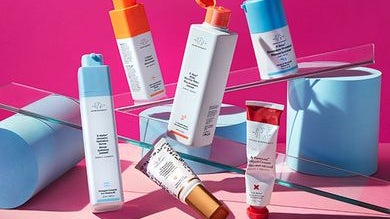THE BEST FACE SUNSCREENS FOR ALL SKIN TYPES
We know we sound like a broken record, but we really can’t emphasise it enough: SPF is a non-negotiable step in your morning skin care routine. Even in winter.
Yes, even on cloudy, rainy and just-plain-miserable days, those nasty UV rays can still damage your skin. First there are UVA rays – they’re responsible for prematurely ageing your skin, accelerating the formation of fine lines and wrinkles. Then there are UVB rays – they’re the ones that cause sunburn. You might not notice the effects of the sun so much in the colder months, but trust us, your skin still needs protecting. Want to find out more? Head over to our Ultimate Guide To Sunscreen.
Which is why a daily face SPF should take pride of place in your skin care arsenal. A far cry from the claggy, chalky sun creams of your childhood, the best face sunscreens are lightweight and non-greasy, with no white cast, and they’re designed to work wonderfully under make up.
To help you pick the best face SPF for you, we’ve rounded up the best face sunscreens, covering all skin types and preferences. But first, let’s answer some of your burning (no pun intended) questions about face SPF.
WHAT SPF DO DERMATOLOGISTS RECOMMEND FOR THE FACE
Dermatologists recommend using a face sunscreen with at least SPF 30, all year round. But as well as checking the SPF, you should also look for products labelled as “broad spectrum”. This means that they protect you from both UVA and UVB rays (as the SPF only refers to the level of protection against UVB rays).
CAN YOU USE BODY SPF ON YOUR FACE
In theory, yes, as your body SPF does work on your face. But for daily protection, it’s definitely best to use a sunscreen specifically formulated for the face. Face-specific sunscreens have a slightly lighter and less greasy formulation that your skin will thank you for – especially if you have oily or breakout-prone skin.
DO YOU PUT SUNSCREEN ON BEFORE OR AFTER MAKE UP
Generally speaking, your face SPF should be applied as the last step in your skin care routine, and before you apply your make up. That said, there are certain products that are designed to be worn – or can be reapplied – over make up!
THE 18 BEST FACE SUNSCREENS
Here’s Ryan from the Cult Concierge team’s pick of the best face SPF for all skin types:
BEST FACE SUNSCREEN OVERALL
A featherweight daily defence, Thank You Farmer’s Sun Project Light Sun Essence SPF 50+ provides consistent, invisible protection from the damaging effects of UV rays. Readily absorbed and completely non-greasy, it hydrates without smothering skin, controlling oil to maintain a smooth, semi-matte finish.
BEST FACE SUNSCREEN FOR SENSITIVE SKIN
Developed with easily-irritated, sensitive complexions in mind, Ultra Violette's Clean Screen Fragrance Free Sensitive Facial SPF30 protects you from the sun’s perilous rays without any artificial fragrances or alcohol. Lightweight, refreshing, and oh-so soothing, think plump, juicy and protected skin with a side of satisfied glee!
BEST FACE SUNSCREEN FOR DRY SKIN
Hydration is the name of the game for dry skin types, and Ultra Violette’s Hydrating Facial Sunscreen is your perfect match. A moisturiser, high-level SPF and primer all rolled into one, this is an all-round crowd pleaser that streamlined routines dream of!
BEST FACE SUNSCREEN FOR OILY SKIN
This shine-minimising Supergoop!'s Supersize Unseen Sunscreen is ideal for oily skin types. Velvety textured and formulated with the cleanest ingredients (you won't find any alcohol, parabens or artificial fragrance), this universally flattering creation provides unparalleled UV deflection without suffocating your skin or exacerbating congestion.
BEST FACE SUNSCREEN FOR ACNE-PRONE SKIN
Combining the broad-spectrum UVA and UVB protection of an SPF with the skin-nourishing benefits of a blemish-busting serum (thanks niacinamide and tea tree!), Zitstocka's MEGASHADE Breakout-Proof SPF 50 Sunscreen Serum is the new staple of your morning skin care routine if you're suffering from acne-prone skin.
BEST FACE SUNSCREEN FOR COMBINATION SKIN
Murad’s City Skin Age Defense Broad Spectrum SPF 50 is suitable for all skin types – so combination skin types, this is the one for you. This featherlight, 100% mineral sunscreen provides high factor protection against UV rays, HEV rays, infrared radiation and particulate matter (think smoke, fumes and other skin-damaging radicals).
BEST FACE SUNSCREEN FOR MATURE SKIN
Plumping, thirst-quenching and helping to stimulate cellular turnover, Thank You Farmer's Sun Project Water Sun Cream is a moisturiser-meets-sunscreen that acts as the Mary Poppins of sunscreen for mature skin (practically perfect in every way, of course!). It calls on hyaluronic acid and a slightly more unusual mistletoe extract to hydrate and encourage repair and renewal.
BEST FACE SUNSCREEN TO PREVENT DARK SPOTS
Infused with antioxidant-rich niacinamide, hydrating hyaluronic acid and skin-soothing, vitamin-rich aloe, thanks to Glow Recipe’s Watermelon Glow Niacinamide Sunscreen SPF 50 you can wave goodbye to dark spots, dullness and dehydration and restore your healthy-looking, radiant and even complexion!
BEST FACE SUNSCREEN FOR DARK SKIN
Ultra Violette’s Queen Screen Lightweight Skinscreen SPF50+ laughs in the face of white cast, making it ideal for dark skin tones (cos let’s face it, that ashy look is not the one!). It’s lightweight, easily absorbed and never pilling, providing skin with a healthy dose of vitamin C and granting copious amounts of glow to boot!
BEST FACE SUNSCREEN WITHOUT WHITE CAST
No matter your skin tone, it’s understandable you want to be without that chalky residue. Summer Friday's Shadedrops Broad Spectrum SPF 30 is a mineral sunscreen that is a guaranteed hit, blending into a range of skin tones without a hint of white residue, for a finish that’s every bit as natural as it is effective in shielding your skin from the sun.
BEST FACE SUNSCREEN FOR UNDER MAKE UP
For a sunscreen that provides the perfect base, look no further than Suqqu’s Watery Protector SPF 30. This water-based formula primes skin and gives a fresh, bright and translucent finish, granting you a healthy glow before you’ve even started with your foundation.
BEST SUNSCREEN FOR FACE AND BODY
If you know you’re going to struggle to fit all your liquids into one of those small plastic bags at airport security, then a surefire way to cut corners is with a sunscreen you can use on both face and body. Nuxe’s Sun Emulsion SPF 30 is packed full of botanical oils and vitamins to nourish and soothe your skin. And with an evocative holiday scent (think sweet orange, tiare and vanilla), this is your irresistible invitation to apply it all over!
BEST MOISTURISER WITH SPF
Looking for ways to streamline your skin care routine? Look for a moisturiser with SPF! That way you can combine two steps and never forget your SPF! Enriched with vitamin E and aloe vera to trap moisture and keep skin hydrated, Alpha-H's Daily Essential Moisturiser SPF 50 offers the perfect substitute to your usual moisturiser, leaving skin wonderfully matte and prepped for foundation.
BEST FACE SUNSCREEN STICK
For easy application and top-ups on the go, Hello Sunday’s Invisible Sun Stick SPF is your new handbag staple. Ideal for applying and reapplying even over make up, this stick is equipped with broad spectrum SPF 30 and is fortified with hyaluronic acid and a medley of nourishing oils to ensure skin is not only always protected, but always moisturised and glowy too.
BEST FACE SUNSCREEN SPRAY
Kate Somerville’s UncompliKated SPF 50 has an ultra-fine mist that feels weightless on your skin and diffuses evenly across your face. While protecting your skin from the sun with broad spectrum SPF 50, it also boosts hydration with hyaluronic acid, and works to blur imperfections and set make up at the same time! Reapply throughout the day for a top up and a welcome refreshment!
BEST TINTED FACE SPF
If you want sun protection that bestows a veil of light coverage (and hydrates too!), then allow us to introduce you to Ultra Violette's Daydream Screen SPF50 Tinted Veil. Choose from 16 flexible shades to suit your skin tone and undertone, and enjoy protected, hydrated and even skin with a natural, radiant finish.
























